Delta Airlines 2012 Annual Report Download - page 66
Download and view the complete annual report
Please find page 66 of the 2012 Delta Airlines annual report below. You can navigate through the pages in the report by either clicking on the pages listed below, or by using the keyword search tool below to find specific information within the annual report.-
 1
1 -
 2
2 -
 3
3 -
 4
4 -
 5
5 -
 6
6 -
 7
7 -
 8
8 -
 9
9 -
 10
10 -
 11
11 -
 12
12 -
 13
13 -
 14
14 -
 15
15 -
 16
16 -
 17
17 -
 18
18 -
 19
19 -
 20
20 -
 21
21 -
 22
22 -
 23
23 -
 24
24 -
 25
25 -
 26
26 -
 27
27 -
 28
28 -
 29
29 -
 30
30 -
 31
31 -
 32
32 -
 33
33 -
 34
34 -
 35
35 -
 36
36 -
 37
37 -
 38
38 -
 39
39 -
 40
40 -
 41
41 -
 42
42 -
 43
43 -
 44
44 -
 45
45 -
 46
46 -
 47
47 -
 48
48 -
 49
49 -
 50
50 -
 51
51 -
 52
52 -
 53
53 -
 54
54 -
 55
55 -
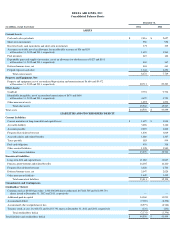 56
56 -
 57
57 -
 58
58 -
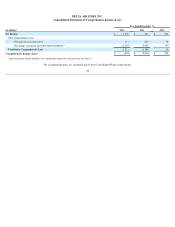 59
59 -
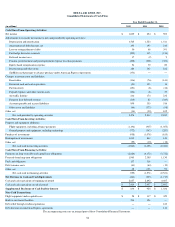 60
60 -
 61
61 -
 62
62 -
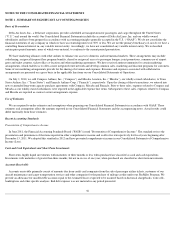 63
63 -
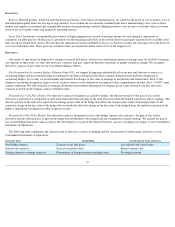 64
64 -
 65
65 -
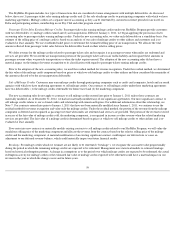 66
66 -
 67
67 -
 68
68 -
 69
69 -
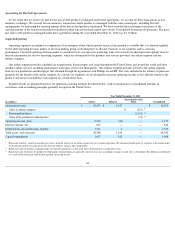 70
70 -
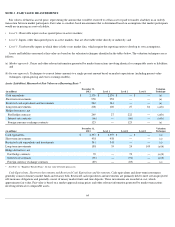 71
71 -
 72
72 -
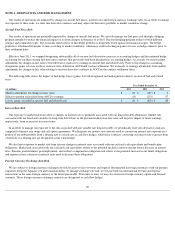 73
73 -
 74
74 -
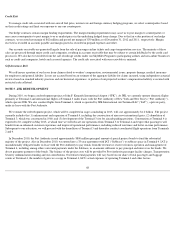 75
75 -
 76
76 -
 77
77 -
 78
78 -
 79
79 -
 80
80 -
 81
81 -
 82
82 -
 83
83 -
 84
84 -
 85
85 -
 86
86 -
 87
87 -
 88
88 -
 89
89 -
 90
90 -
 91
91 -
 92
92 -
 93
93 -
 94
94 -
 95
95 -
 96
96 -
 97
97 -
 98
98 -
 99
99 -
 100
100 -
 101
101 -
 102
102 -
 103
103 -
 104
104 -
 105
105 -
 106
106 -
 107
107 -
 108
108 -
 109
109 -
 110
110 -
 111
111 -
 112
112 -
 113
113 -
 114
114 -
 115
115 -
 116
116 -
 117
117 -
 118
118 -
 119
119 -
 120
120 -
 121
121 -
 122
122 -
 123
123 -
 124
124 -
 125
125 -
 126
126 -
 127
127 -
 128
128 -
 129
129 -
 130
130 -
 131
131 -
 132
132 -
 133
133 -
 134
134 -
 135
135 -
 136
136 -
 137
137 -
 138
138 -
 139
139 -
 140
140 -
 141
141 -
 142
142 -
 143
143 -
 144
144 -
 145
145 -
 146
146 -
 147
147 -
 148
148 -
 149
149 -
 150
150 -
 151
151 -
 152
152 -
 153
153 -
 154
154 -
 155
155 -
 156
156 -
 157
157 -
 158
158 -
 159
159 -
 160
160 -
 161
161 -
 162
162 -
 163
163 -
 164
164 -
 165
165 -
 166
166 -
 167
167 -
 168
168 -
 169
169 -
 170
170 -
 171
171 -
 172
172 -
 173
173 -
 174
174 -
 175
175 -
 176
176 -
 177
177 -
 178
178 -
 179
179 -
 180
180 -
 181
181 -
 182
182 -
 183
183 -
 184
184 -
 185
185 -
 186
186 -
 187
187 -
 188
188 -
 189
189 -
 190
190 -
 191
191 -
 192
192 -
 193
193 -
 194
194 -
 195
195 -
 196
196 -
 197
197 -
 198
198 -
 199
199 -
 200
200 -
 201
201 -
 202
202 -
 203
203 -
 204
204 -
 205
205 -
 206
206 -
 207
207 -
 208
208 -
 209
209 -
 210
210 -
 211
211 -
 212
212 -
 213
213 -
 214
214 -
 215
215 -
 216
216 -
 217
217 -
 218
218 -
 219
219 -
 220
220 -
 221
221 -
 222
222 -
 223
223 -
 224
224 -
 225
225 -
 226
226 -
 227
227 -
 228
228 -
 229
229 -
 230
230 -
 231
231 -
 232
232 -
 233
233 -
 234
234 -
 235
235 -
 236
236 -
 237
237 -
 238
238 -
 239
239 -
 240
240 -
 241
241 -
 242
242 -
 243
243 -
 244
244 -
 245
245 -
 246
246 -
 247
247 -
 248
248 -
 249
249 -
 250
250 -
 251
251 -
 252
252 -
 253
253 -
 254
254 -
 255
255 -
 256
256 -
 257
257 -
 258
258 -
 259
259 -
 260
260 -
 261
261 -
 262
262 -
 263
263 -
 264
264 -
 265
265 -
 266
266 -
 267
267 -
 268
268 -
 269
269 -
 270
270 -
 271
271 -
 272
272 -
 273
273 -
 274
274 -
 275
275 -
 276
276 -
 277
277 -
 278
278 -
 279
279 -
 280
280 -
 281
281 -
 282
282 -
 283
283 -
 284
284 -
 285
285 -
 286
286 -
 287
287 -
 288
288 -
 289
289 -
 290
290 -
 291
291 -
 292
292 -
 293
293 -
 294
294 -
 295
295 -
 296
296 -
 297
297 -
 298
298 -
 299
299 -
 300
300 -
 301
301 -
 302
302 -
 303
303 -
 304
304 -
 305
305 -
 306
306 -
 307
307 -
 308
308 -
 309
309 -
 310
310 -
 311
311 -
 312
312 -
 313
313 -
 314
314 -
 315
315 -
 316
316 -
 317
317 -
 318
318 -
 319
319 -
 320
320 -
 321
321 -
 322
322 -
 323
323 -
 324
324 -
 325
325 -
 326
326 -
 327
327 -
 328
328 -
 329
329 -
 330
330 -
 331
331 -
 332
332 -
 333
333 -
 334
334 -
 335
335 -
 336
336 -
 337
337 -
 338
338 -
 339
339 -
 340
340 -
 341
341 -
 342
342 -
 343
343 -
 344
344 -
 345
345 -
 346
346 -
 347
347 -
 348
348 -
 349
349 -
 350
350 -
 351
351 -
 352
352 -
 353
353 -
 354
354 -
 355
355 -
 356
356 -
 357
357 -
 358
358 -
 359
359 -
 360
360 -
 361
361 -
 362
362 -
 363
363 -
 364
364 -
 365
365 -
 366
366 -
 367
367 -
 368
368 -
 369
369 -
 370
370 -
 371
371 -
 372
372 -
 373
373 -
 374
374 -
 375
375 -
 376
376 -
 377
377 -
 378
378 -
 379
379 -
 380
380 -
 381
381 -
 382
382 -
 383
383 -
 384
384 -
 385
385 -
 386
386 -
 387
387 -
 388
388 -
 389
389 -
 390
390 -
 391
391 -
 392
392 -
 393
393 -
 394
394 -
 395
395 -
 396
396 -
 397
397 -
 398
398 -
 399
399 -
 400
400 -
 401
401 -
 402
402 -
 403
403 -
 404
404 -
 405
405 -
 406
406 -
 407
407 -
 408
408 -
 409
409 -
 410
410 -
 411
411 -
 412
412 -
 413
413 -
 414
414 -
 415
415 -
 416
416 -
 417
417 -
 418
418 -
 419
419 -
 420
420 -
 421
421 -
 422
422 -
 423
423 -
 424
424
 |
 |

The SkyMiles Program includes two types of transactions that are considered revenue arrangements with multiple deliverables. As discussed
below, these are (1) passenger ticket sales earning mileage credits and (2) the sale of mileage credits to participating companies with which we have
marketing agreements. Mileage credits are a separate unit of accounting as they can be redeemed by customers in future periods for air travel on
Delta and participating airlines, membership in our Sky Club and other program awards.
Passenger Ticket Sales Earning Mileage Credits. Passenger ticket sales earning mileage credits under our SkyMiles Program provide customers
with two deliverables: (1) mileage credits earned and (2) air transportation. Effective January 1, 2011, we began applying the provisions of new
accounting rules to passenger tickets earning mileage credits. Under the new accounting rules, we value each deliverable on a standalone basis. Our
estimate of the selling price of a mileage credit is based on an analysis of our sales of mileage credits to other airlines and customers and is re-
evaluated at least annually. We use established ticket prices to determine the estimated selling price of air transportation. We allocate the total
amount collected from passenger ticket sales between the deliverables based on their relative selling prices.
We defer revenue for the mileage credits related to passenger ticket sales and recognize it as passenger revenue when miles are redeemed and
services are provided. We record the air transportation portion of the passenger ticket sales in air traffic liability and recognize these amounts in
passenger revenue when we provide transportation or when the ticket expires unused. The adoption of the new accounting rules did not have a
material impact on the timing of revenue recognition or its classification with regard to passenger tickets earning mileage credits.
Prior to the adoption of the new accounting rules, we used the residual method for revenue recognition. Under the residual method, we determined
the fair value of the mileage credit component based on prices at which we sold mileage credits to other airlines and then considered the remainder of
the amount collected to be the air transportation deliverable.
Sale of Mileage Credits.
Customers may earn mileage credits through participating companies such as credit card companies, hotels and car rental
agencies with which we have marketing agreements to sell mileage credits. Our contracts to sell mileage credits under these marketing agreements
have two deliverables: (1) the mileage credits redeemable for future travel and (2) the marketing component.
The new accounting rules do not apply to contracts to sell mileage credits entered into prior to January 1, 2011 unless those contracts are
materially modified. As of December 31, 2012, we had not materially modified any of our significant agreements. Our most significant contract to
sell mileage credits relates to our co-brand credit card relationship with American Express. For additional information about this relationship, see
Note 7
. For contracts entered into prior to January 1, 2011 that have not been materially modified since January 1, 2011, we continue to use the
residual method for revenue recognition and value only the mileage credits. Under the residual method, the portion of the revenue from the mileage
component is deferred and recognized as passenger revenue when miles are redeemed and services are provided. The portion of the revenue received
in excess of the fair value of mileage credits sold, the marketing component, is recognized in income as other revenue when the related marketing
services are provided. The fair value of a mileage credit is determined based on prices at which we sell mileage credits to other airlines and is re-
evaluated at least annually.
If we enter into new contracts or materially modify existing contracts to sell mileage credits related to our SkyMiles Program, we will value the
standalone selling price of the marketing component and allocate the revenue from the contract based on the relative selling price of the mileage
credits and the marketing component. A material modification of an existing significant contract could impact our deferral rate or cause an
adjustment to our deferred revenue balance, which could materially impact our future financial results.
Breakage. For mileage credits which we estimate are not likely to be redeemed (“breakage”), we recognize the associated value proportionally
during the period in which the remaining mileage credits are expected to be redeemed. Management uses statistical models to estimate breakage
based on historical redemption patterns. A change in assumptions as to the period over which mileage credits are expected to be redeemed, the actual
redemption activity for mileage credits or the estimated fair value of mileage credits expected to be redeemed could have a material impact on our
revenue in the year in which the change occurs and in future years.
59
